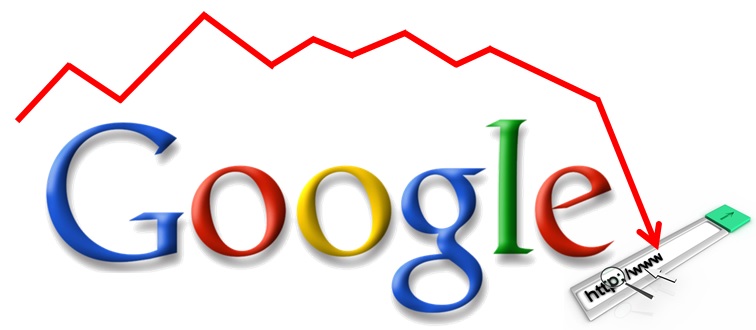How to Tell if Your Website Has Been Penalised By Google

As the Google Algorithm has got smarter and smarter over the years and introduced updates such as Panda and Penguin, a lot of webmasters have seen their rankings drop as a result. This can often have a huge impact on website traffic, enquiries and sales.
However, the question remains, ‘how exactly do I know if my website has been penalised or not?’ There are a number of things you can look out for to tell if your website has been penalised, before you take action. Find out what exactly to look for and questions you need to ask by reading the rest of the article below.
1) Are you ranking at all?
One of the first things you should look at and probably the simplest thing to do is to check your rankings. Have a look at all of the key phrases you are targeting and see if you’re ranking for any of them. If you are ranking for some key phrases and not others then the probability is that you haven’t been penalised and the terms you aren’t ranking for are just more competitive. However, if you aren’t ranking for anything at all then it could be because you have picked the wrong keywords for the campaign, there is something wrong with your SEO, or you have been penalised.
If the SEO campaign is a new one and you aren’t ranking then it is probably because your website needs to gain more authority and trust in Google. On the other hand, if you have been running your SEO campaign for a while and used to rank for some of your keywords but don’t rank for anything at all anymore, then there is a good chance you have been penalised.
If this is the case you should consider checking the content on your site to make sure it is as good as can be and not low quality or spam. You should also run a thorough backlink analysis on your site and filter out any potential backlinks that worked in the past, but could’ve now got you penalised. These could include low quality article directory links, link farms, reciprocal links, blog comment links and others. If you feel that low quality backlinks are the reason for your site not ranking and possibly being penalised then read more of this article here on submitting a disavow links request to Google - The Google Disavow Tool - 5 Do's and Don'ts
2) Does every page rank or is there a strange pattern of which pages do and don’t rank?
This is the second thing to think about if you are trying to determine whether or not your website has been penalised. First, you need to analyse all of the keywords that you are ranking for and not ranking for. Second, look at the pages that you are ranking for and the pages that aren’t ranking. Once you have identified the pages that aren’t ranking you should look at the history of them and see if they have ever ranked in the past. If they have ranked previously and aren’t doing now, or have suddenly stopped ranking, then these specific pages could well have been penalised by Google. Also, take a look at the keywords you are targeting for the pages that aren’t ranking and ask yourself, ‘How competitive are they?’ If the keywords targeted to the pages that aren’t ranking aren’t very competitive, then this could be another indication that your site has been penalised.
If this is the case you will need to analyse the pages that you think have been awarded a penalty and look at the On Site SEO and Off Site SEO surrounding them; including content, meta tags, backlinks etc. If there are any warnings that flag up whilst you are going through this then you must either submit a disavow links request or alter the content on the page to have it reconsidered by Google. However, only take action if you are certain that the page has been penalised.
Are there any messages in Webmaster Tools?
The final thing to look for and the most easiest way to spot if your website has been penalised, is to check your Google Webmaster Tools account. If you don’t have one and you aren’t monitoring your website, then I highly recommend you set it up (sign up here - https://www.google.com/webmasters/tools/home), it is free, easy and will give you key information on things that can harm your visibility in the SERPS. It reports on impressions, clicks, keywords you are being found by, and also allows you to submit a disavow links request to Google should you require it. It will also send you a message if your website has been awarded a manual penalty by Google. If you don’t have any messages in Google Webmaster Tools then your website hasn’t been awarded a manual penalty, however it could’ve still been awarded an algorithmic penalty, which you can try to identify by asking the questions that we have already talked about previously in this article.
If you are still unsure whether your website has been penalised or not, don’t panic, just take more time to analyse the different areas I have mentioned and you should be able to come to a conclusion. However, it is important to remember never disavow links or change anything drastic unless you are sure that you need to. The drop in rankings could just be due to an update to the algorithm, a fluctuation or competitors doing more than you.



